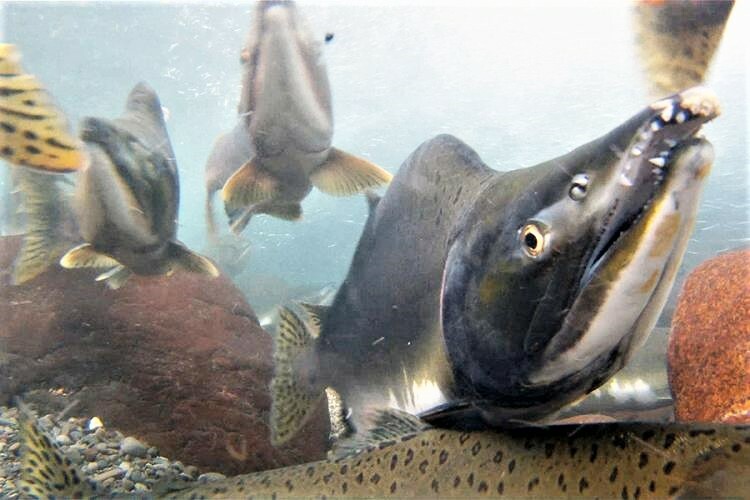Alaska’s far northwest fishing region made a comeback in salmon and crab fisheries this year. As of Aug. 18, the preliminary numbers for the Kotzebue area had hit 354,000 chums, and if the two shoreside processors continued operating until the end of the month, the area could see a near-record harvest.
“We might hit 400,000 chums, and if we hit 401, we might squeak in with a top-10 harvest,” says Jim Menard, an area management biologist with the Alaska Department of Fish and Game, in Nome. ADF&G’s preliminary “blue sheet” entry on August 23 revealed a harvest of 420,000 chums in the Kotzebue area and another 28,000 in Norton Sound.
From 2014 to 2019 harvests ranged from a low of 305,000 to a high of 695,000 chums, which generated revenues of $1.1 million to $2.9 million.
Optimism for a banner season
A slow start to the fishery had the industry worried that this year’s season might mimic the dismal numbers of 2021, but the brunt of the run showed up later – and with it the optimism for a banner season.
“The last week of July they really started lighting up,” says Menard.
The 2021 salmon season could be described as a sleeper at best, with its meager harvest of 96,500 chums and ex-vessel earnings of $332,000. In 2020, the chums tallied up to around 150,000 for earrings of $542,000, well below the historical average earnings of $705,000. When it comes to regional economics it takes a lot of chums at 46 cents per pound to generate appreciable revenues for the commercial fleet. In 2021 participation dropped from 68 active permit holders in 2020 to 52 in 2021.
In Norton Sound, near Nome, fishermen also enjoyed a bountiful pink salmon harvest of around 80,000 fish. Area streams usually produce more abundant pink runs in the even-numbered years. Last year’s 2021 season, however, came as a surprise, when the fleet landed 300,000 pinks.
“The even years are better than odd,” says Menard, who adds that last year’s harvest would have been even higher, had the fleet not been limited to just one processing plant. When that plant became inundated, the fishery closed until it caught up with the volume of deliveries.
One more bright spot
The other bright spot for the far north has been this year’s 291,500-pound harvest of red king crab, which is the best since 2016 when the GHL had been set at 500,000 pounds. The seasons had been all but closed for lack of interest during the past few years, and the fleet couldn’t catch the 2019 GHL of 150,000 pounds as the crab were nowhere to be found.
“It just faded,” says Menard. “They couldn’t catch the crab, even though we kept it open.”
That all changed during this year’s summer season, and with markets hungry for Bering Sea crab (there will likely be no 2022 season in Bristol Bay) Norton Sound Seafood Products – the area’s mainstay processor – offered fishermen an ex-vessel price of $12 per pound. That translated to record-breaking revenues of $3.7 million for the 26 participating fishermen.







